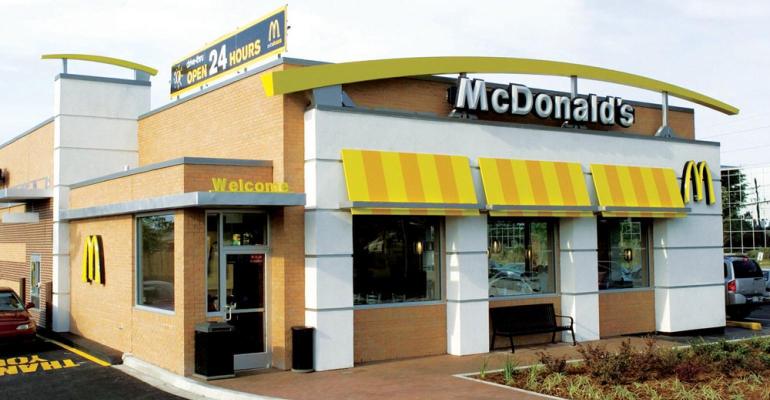McDonald’s spent a lot of time during its Q1 earnings call Tuesday morning talking about a pressured consumer set, continuing a conversation that started last quarter when the company reported declining traffic among low-income consumers. This time around, it seems as though all consumers may be pulling back a bit.
“In Q1, broad-based consumer pressures persisted around the world. They’re even more discriminating with every dollar they spend. Industry traffic is flat to declining in the U.S. and several other markets,” CEO Chris Kempczinski said during the call. “We know our customers are looking for reliable, everyday value now more than ever.”
Notably, the company raised prices by about 10% last year to offset inflationary pressures; a move that swiftly became a focal point of social media fodder from aggrieved fans. To be sure, most other chains have also taken significant pricing, but McDonald’s has long been an industry standard for value seekers, so its perception is likely more vulnerable when costs go up. As such, its value perception leadership gap has closed.
“We’re seeing improvement across all major markets on customer satisfaction. Where we see one opportunity is our relative superiority on affordability has declined,” Kempczinski said. “If there’s any pressure on overall satisfaction … it’s losing some of that relative superiority on affordability. It’s important we are still viewed as a value proposition, but the degree of a gap in a few markets has narrowed.”
McDonald’s plans to put a playbook in place throughout the duration of this year to widen that gap back up. That playbook includes taking pages from some international markets that have maintained strong value propositions, such as Germany with its “McSmart” platform put into place earlier this year. McSmart presents affordable entry meals, executives said, which is something they are focused on translating to the domestic market.
“In the markets where we’re doing this well, our business is outperforming. As we continue to take a One McDonald’s approach, it gives us an ability to learn from each other,” Kempczinski said. “The construct we see as our successful playbook is good entry level offers, meal deals, and offering value specific to breakfast.”
McDonald’s will also begin prioritizing a national value platform this year, versus its current “50 different ways with local value” approach and will flex its marketing muscle to drive awareness of that platform. Of course, these changes require alignment with the 2,000 or so franchisees in the system, but they have been generating higher cash flows and are therefore able “get more aggressive with value offerings,” Kempczinski said.
“We have an ability to invest in traffic driving initiatives,” he said, adding that he is optimistic such an alignment will continue to drive even more growth.
“We literally wrote the playbook on value,” he said. “The opportunity for us is how do you pull back a little on all the local value we’re offering, which frankly, we don’t have very high awareness on, and how do you coalesce and drive awareness around a national value proposition. I think there’s a smart way to do this that can end up being net neutral to a franchisee P&L. Using the size and scale of our marketing engine and the amount of media we spend, I think that’s going to be the opportunity going forward.”
Despite the optimism, executives noted that they expect industry-wide traffic to be negative for the full year. To navigate, CFO Ian Borden said McDonald’s will continue to take a “street fighting mentality.”
“Everybody’s fighting for fewer consumers or consumers visiting less frequently. We are making sure our system is positioned with strength and capability,” Borden said. “There is no reason we shouldn’t have most compelling affordability to consumers.”
Q1 by the numbers
- Global comp sales were up nearly 2%, marking the company’s 13th consecutive quarter of positive comp sales growth.
- U.S. comp sales growth increased 2.5%.
- Consolidated revenues were more than $6 billion, an increase of over 4% year-over-year.
Contact Alicia Kelso at [email protected]

